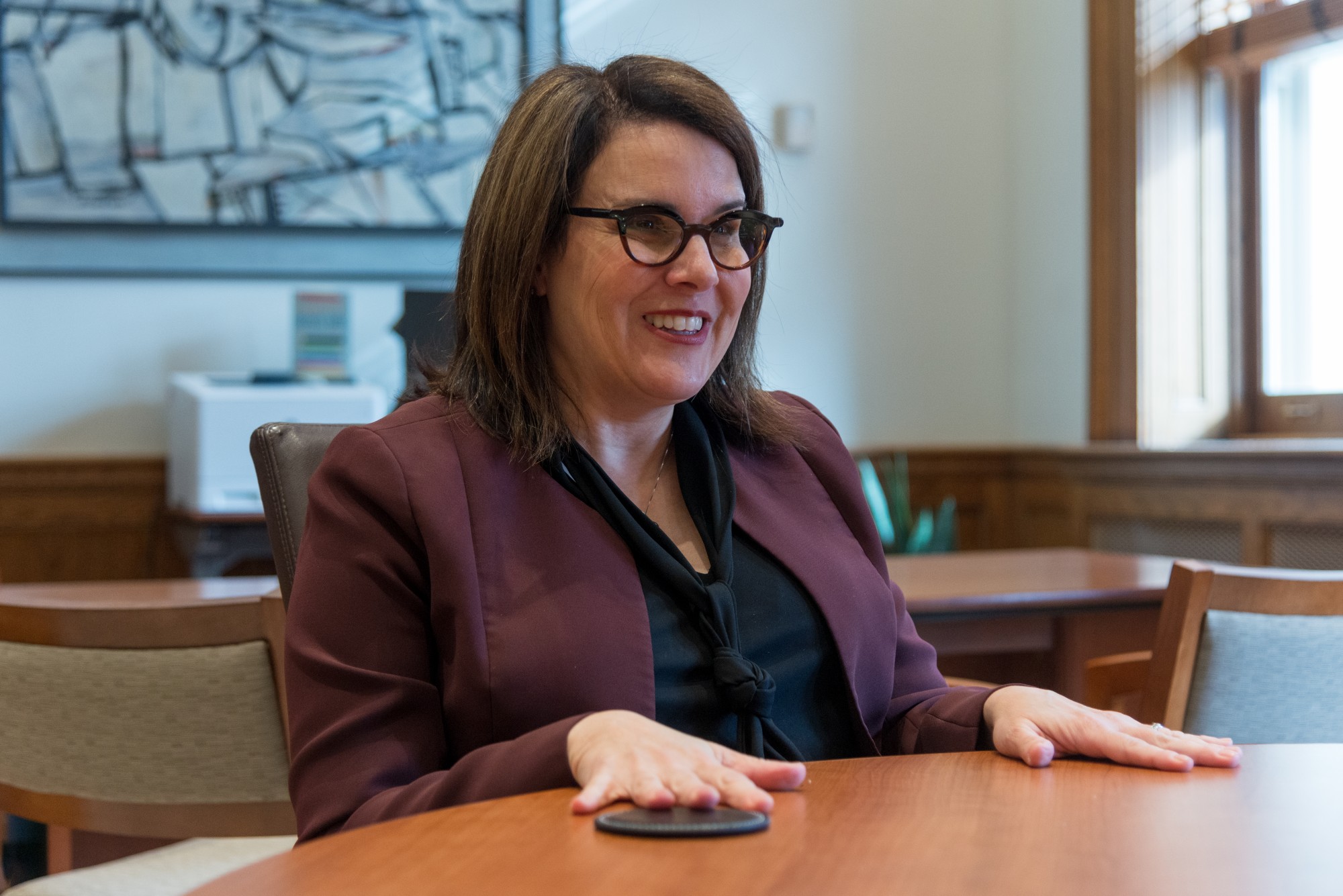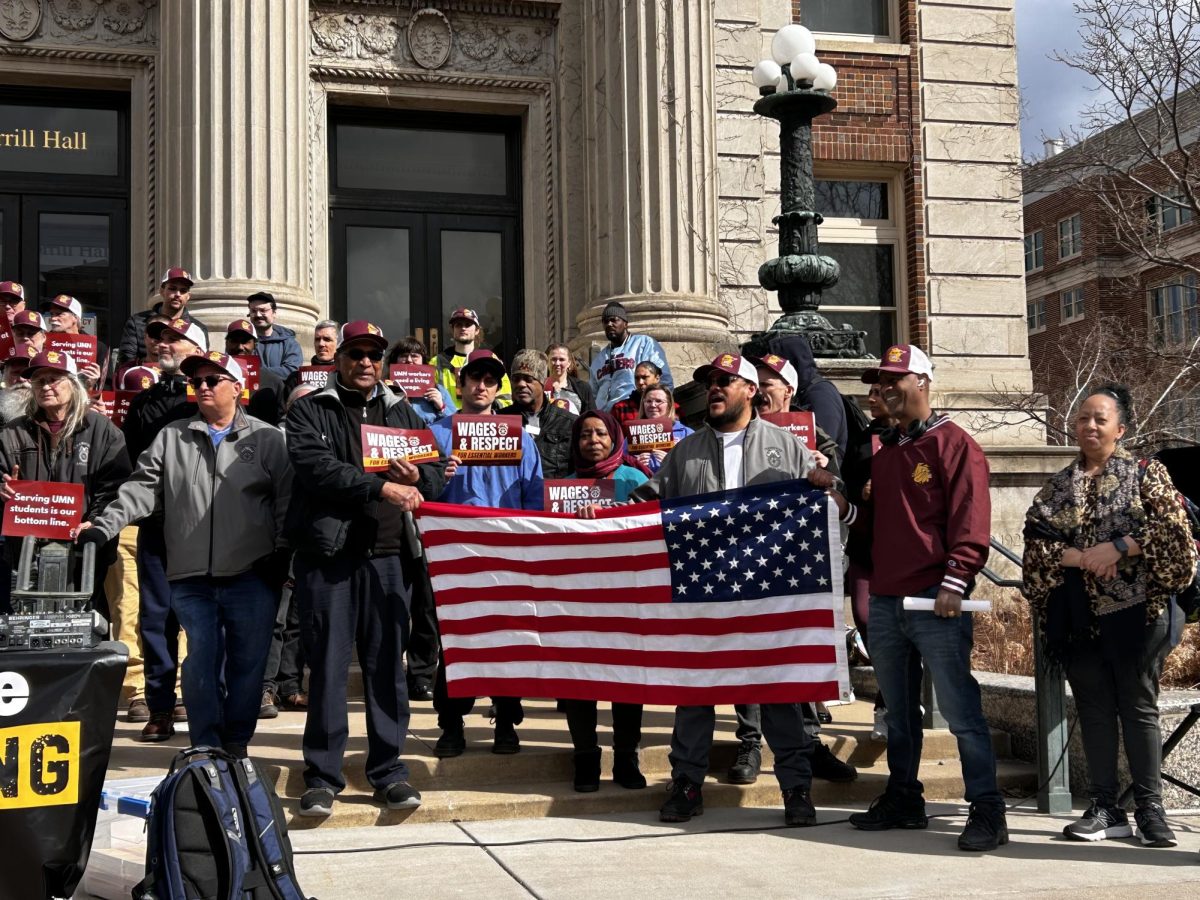In an interview with the Minnesota Daily on Monday, University of Minnesota President Joan Gabel responded to the recent University bus crash at Acadia Cafe and explained the University’s decision to request more than $900 million in funding from the state legislature.
Gabel also explained the University’s decision to loosen face mask requirements on campus and addressed student, staff and faculty concerns with the new masking requirements.
What is your response to the Acadia bus crash that happened last month?
“Obviously, it’s a terrible situation, but while the bus bears the Minnesota brand, it’s run by a totally independent third party called First Transit. All of our response to this incident then goes through First Transit as the actual operator of the bus, and we have been in regular contact with First Transit about the situation, underlying cause [and] response to Acadia.”
The University recently lifted mask requirements in some areas on campus, although they’re still required in certain areas like classrooms. Is the University considering dropping the mask requirements completely? Is there a specific transmission rate that would allow the University take away requirements or reinstate certain requirements?
“We are not at the moment considering dropping the mask requirements completely. We meet through the Emergency Management Policy Committee regularly, and we get data updates at that time from both our public health folks and from our medical clinical folks on transmission rates, hospitalizations and all the other intersecting data that we’ve relied on all along.
As that guidance changes, we may lift all of the mask mandates, or like some of our colleagues on other campuses, we may reinstate them. But as of today, we’re stable and we are regularly reevaluating. It’s not based solely on a specific, single data point.”
What do you say to students, staff or faculty who may still be worried about COVID-19 and want to maintain stricter mask requirements?
“We have members of the campus community who want stricter requirements. We have members of the campus community who want looser requirements, and everything in between. Safety is our first priority, but we don’t need to be any safer than what the requirements are, and that’s why we follow the public health guidance.”
The University is asking the state legislature for more than $900 million as a supplemental budget request to fund different initiatives and projects, like scholarships and health science centers. Why is the administration asking for this large amount?
“The total amount is high, but each individual project we think are things that are exactly what the University should be doing for all of our stakeholders. They were very carefully selected for that reason. The state is in a historical surplus, and if there were ever a time to ask for a significant investment, it’s now.
While the total number is large … we think each of the projects makes perfect sense for how the state would consider partnering with higher ed during a period of surplus, and we hope that they see it the same way we do. I would encourage people to focus less on the total amount and more on the projects that comprise that total amount.”
Do you expect to receive all $900 million of the request? How would the University fund current proposed and future projects if that funding is not given by the state?
“We would be delighted if we received everything we asked for, that would be great news. Much more like typical years, when we make our budget request, there are lots of things that we either can’t do or can’t do as quickly if we don’t get the infusion of capital from the state. It just depends on what they fund or what they don’t fund, or at what level for us to get into the specifics about how that would work.”
Forums for the Core Curriculum 2025 committee are taking place this week. Why is the University revising general education curriculum for undergraduate students on the Twin Cities campus right now?
“So this project has actually been underway since before I arrived … and like a lot of large curricula review, you don’t rush it. It takes a long time. There’s a lot of discussion, but the general idea is that we should always be reviewing what students learn and while we have tweaked the core curriculum, added some things [and] made modifications, a full on review and change hasn’t happened in decades.”
As the school year wraps up in May, what are you looking forward to for next year in your role as president?
“A lot of the work that we’ll do is what you’re seeing in this strategic plan. We’re going to keep on student well-being, we have plans underway around how all of our faculty, staff and students are compensated … we’re hiring several new people into the leadership team.
I’m hopeful that next year COVID is even more in our rearview mirror. It may not be completely gone, but that we are progressively feeling safer and more comfortable, but that we are able to retrain some of our lessons like the way it informs work with flexibility or other innovations that are the silver linings. You have to squint to see it, but there’s been silver linings around everything we’ve been through.”
This interview has been edited for clarity and length.



















